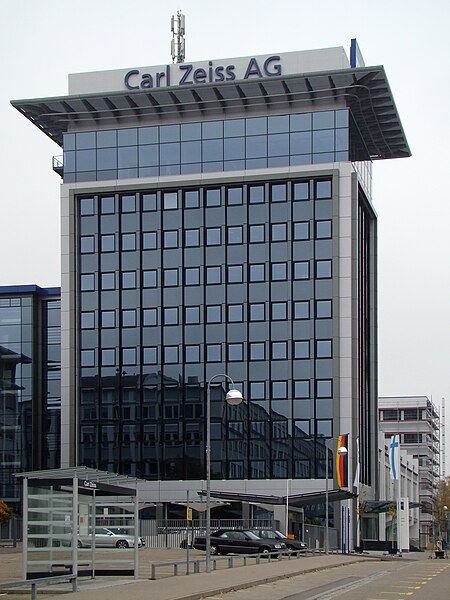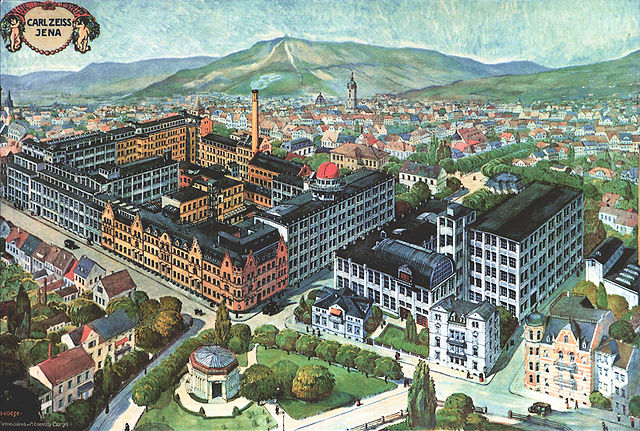Carl Zeiss was a German scientific instrument maker, optician and businessman. In 1846 he founded his workshop, which is still in business as Carl Zeiss AG. Zeiss gathered a group of gifted practical and theoretical opticians and glass makers to reshape most aspects of optical instrument production. His collaboration with Ernst Abbe revolutionized optical theory and practical design of microscopes. Their quest to extend these advances brought Otto Schott into the enterprises to revolutionize optical glass manufacture. The firm of Carl Zeiss grew to one of the largest and most respected optical firms in the world.
10 DM commemorative coin issued by the Federal Republic of Germany (1988) designed by Carl Vezerfi-Clemm on the 100th anniversary of Carl Zeiss's death
Large microscope by Carl Zeiss (1879)
Zeiss's grave
Carl Zeiss AG, branded as ZEISS, is a German manufacturer of optical systems and optoelectronics, founded in Jena, Germany in 1846 by optician Carl Zeiss. Together with Ernst Abbe and Otto Schott he laid the foundation for today's multinational company. The current company emerged from a reunification of Carl Zeiss companies in East and West Germany with a consolidation phase in the 1990s. ZEISS is active in four business segments with approximately equal revenue in almost 50 countries, has 30 production sites and around 25 development sites worldwide.
Headquarters in Oberkochen
First workshop of Carl Zeiss in the center of Jena, c. 1847
Carl Zeiss Jena (1910)
One of the Stasi's cameras with the special SO-3.5.1 (5/17mm) lens developed by Carl Zeiss, a so-called "needle eye lens", for shooting through keyholes or holes down to 1 mm in diameter







